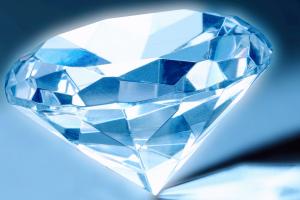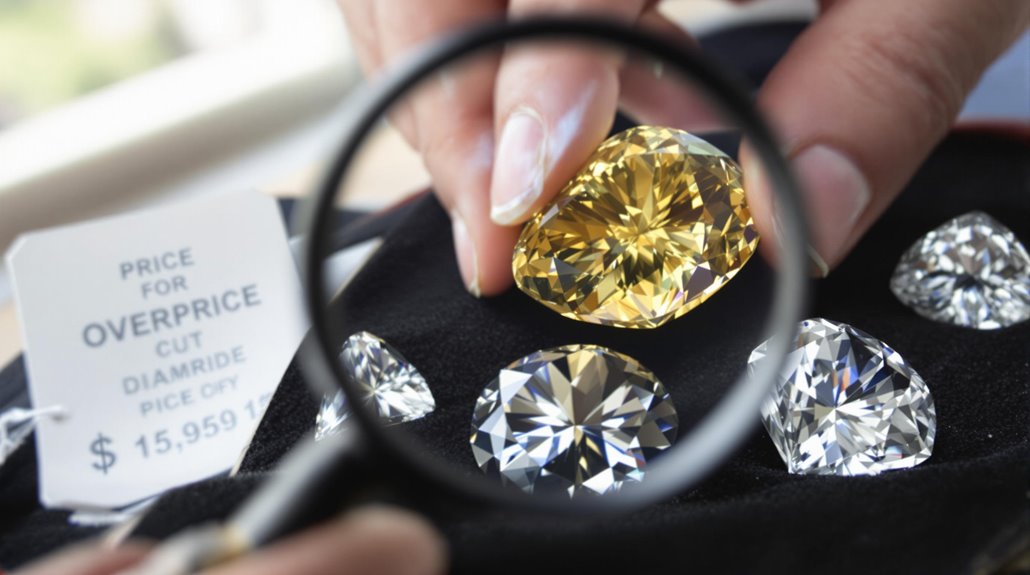Article Contents
Common diamond buying mistakes include rushing decisions without proper research, overlooking certification quality, and focusing solely on carat weight during neglecting cut quality. Buyers often fall prey to misleading discounts or compromise on reputable sellers for lower prices. Selecting diamonds without GIA certification can lead to overpayment for inferior stones, whereas neglecting service quality and guarantees poses long-term risks. Comprehending these challenges opens the path to securing an exceptional stone.
Acquiring a diamond represents one of life's most significant purchases. Many buyers inadvertently compromise their investment by falling prey to common traps. Moreover, the traditional 4 C's serve as a foundation for diamond clarity considerations and diamond color grading. Relying solely on these metrics can lead to oversight of critical factors. The intricate world of diamond evaluation extends far beyond these basic parameters, with even slight variations in quality resulting in substantial price differences. The cut quality influences brilliance and overall value more significantly than other characteristics. Astute buyers recognize that mastering these fundamentals merely opens the door to a more extensive comprehension. Professional gemmologists should be consulted for their expertise in evaluating diamond quality and authenticity.
The misconception that all diamond grades carry equal weight across certification bodies presents another significant pitfall. The Gemological Institute of America (GIA) stands as the gold standard in diamond certification, with its stringent grading protocols setting industry benchmarks. Ethical certifications from organizations like Fairtrade ensure responsible sourcing practices and support sustainable mining. Diamonds lacking GIA certification often command lower prices for valid reasons, as other laboratories may employ less rigorous standards. This disparity in grading practices can significantly impact both the diamond's value and its market position.
The selection of a trustworthy seller proves equally important in the diamond acquisition process. Established jewelers with proven track records offer more than mere products; they provide expertise, transparency, and long-term service commitments. Online purchases, although convenient, demand heightened scrutiny because of potential misrepresentation. Lab-grown alternatives can offer significant cost savings while maintaining exceptional quality. The most discriminating buyers recognize that a jeweler's reputation directly correlates with the authenticity and value of their investment.
Service quality, often undervalued in the purchasing equation, plays a pivotal role in guaranteeing satisfaction. Premium jewelers distinguish themselves through extensive guarantees, detailed documentation, and expert guidance throughout the selection process. This level of service becomes particularly valuable when maneuvering through the intricacies of diamond authentication and valuation, offering peace of mind long after the initial transaction.
The pressure to make swift decisions often leads to costly misjudgments in diamond purchasing. Thoughtful consideration and thorough evaluation remain fundamental components of a successful acquisition. Furthermore, the notion that significant bargains exist in the diamond market often proves misleading. Diamond pricing adheres to established industry standards, with legitimate discounts typically indicating compromised quality or authenticity.
The most successful purchases result from patient, informed decision-making rather than hasty bargain hunting. This methodical approach, combined with expert guidance and proper certification, guarantees that buyers secure stones that truly reflect their value and meet exacting standards of distinction.
Frequently Asked Questions
How Do I Determine if a Diamond's Asking Price Is Fair?
Like downloading an app, determining fair diamond prices requires comparing market values, comprehending quality factors (4Cs), checking GIA certification, and consulting trusted jewelers for value assessment.
Should I Buy a Diamond Online or From a Physical Store?
Both online shopping and store experiences offer value. Online provides lower prices and wider selection, whereas physical stores allow hands-on viewing. The choice depends on personal comfort with digital versus traditional purchasing.
What Insurance Options Are Available for My Diamond Purchase?
Diamond insurance choices include standard homeowners/renters coverage, additional riders for improved protection, and specialized standalone jewelry policies. Each coverage selection provides different levels of security for precious investments.
How Do Different Diamond Shapes Affect the Overall Sparkle?
Like a prism splitting sunlight, round brilliant cuts maximize sparkle with 58 facets, whereas fancy shapes offer varying sparkle factors. Princess cuts deliver bright flashes, and emerald cuts create subtle, elegant sparkle patterns.
Can I Upgrade My Diamond to a Larger One Later?
Diamond upgrades to larger sizes are possible through most jewelers, though resale values typically range from 25-75% of original cost. Many retailers offer specific upgrade programs for seamless changes.

